Witness Stilt Fishing In Sri Lanka: An Eco-Tourism Experience
Sri Lanka, renowned for its stunning beaches and rich cultural heritage, harbors a unique tradition that has captivated travelers for centuries: stilt fishing. This ancient practice, passed down through generations of coastal communities, blends artistry with necessity, offering a glimpse into a way of life intimately connected to the island's coastal rhythms. Stilt fishing in Sri Lanka isn't merely a means to catch fish; it's a cultural emblem, embodying the resilience and ingenuity of Sri Lanka's fishing communities.
Sri Lanka
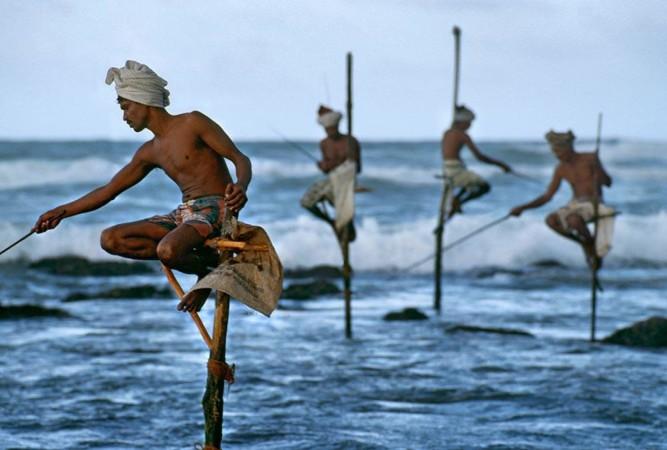
Historical and Cultural Origin of Stilt Fishing
Ancient Stilt Fishing
Stilt fishing traces its roots deep into Sri Lanka's history, dating back over 70 years to the aftermath of World War II when traditional fishing grounds became overcrowded. Seeking new ways to fish in shallow waters, local fishermen ingeniously crafted stilts from sturdy wooden poles, enabling them to perch above the waves and cast their lines further out to sea. This innovative approach not only solved practical fishing challenges but also evolved into a distinctive cultural practice celebrated along Sri Lanka's southern coast.
Today, stilt fishing stands as a testament to the enduring spirit of Sri Lanka's coastal inhabitants, who have preserved this tradition despite modernization and changing economic landscapes. Each morning and evening, silhouettes of fishermen balancing gracefully atop their stilts against the backdrop of the Indian Ocean evoke a sense of timelessness and tradition that resonates deeply with visitors seeking authentic cultural experiences.
Traditional Technique of Stilt Fishing
Stilt fishing is as much an art form as it is a fishing technique. The method begins with fishermen perching themselves atop slender stilts anchored firmly into the seabed, often passed down within families from generation to generation. Balancing with practiced ease, they wield a rod and line with precision, casting out into the azure waters where fish teem just beneath the surface. This height advantage not only extends their reach but also allows them to spot fish movements more clearly, ensuring a bountiful catch.
The equipment used is minimalist yet effective: a simple rod and line, sometimes augmented with a small baited hook, delicately maneuvered to entice fish without disturbing the tranquil waters below. Each movement is deliberate, honed through years of experience, reflecting a synergy between man and sea that defines the essence of stilt fishing in Sri Lanka.
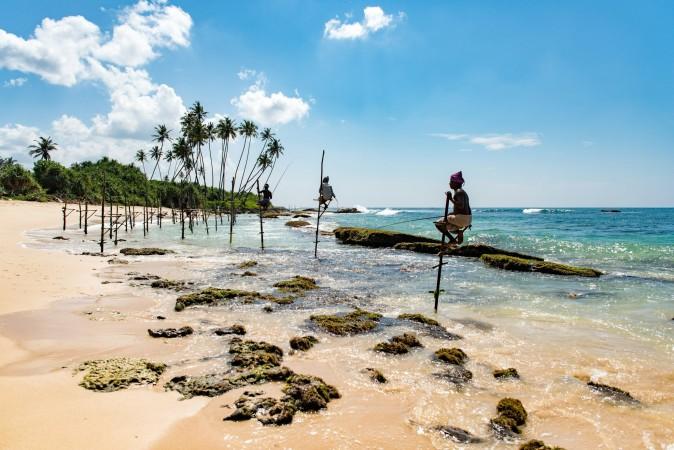
Sri Lanka's traditional stilt fishing - © Daniel Klein
Geographical and Environmental Influences
Geographical Aspects
Stilt fishing thrives in specific coastal locales along Sri Lanka's southern and southwestern shores, where shallow waters and calm seas provide ideal conditions for this ancient practice. Regions such as Weligama, Ahangama, and Koggala are renowned hotspots, their sandy beaches and clear waters attracting both fishermen and curious travelers alike.
Environmental Aspects
Beyond its cultural allure, stilt fishing also underscores the delicate balance between human activity and environmental sustainability. Fishermen, attuned to seasonal patterns and ecological rhythms, practice selective harvesting to preserve fish stocks and maintain ecosystem health. This conscientious approach ensures that future generations can continue to appreciate and engage with this time-honored tradition.
>>>Read more:
>>Thrilling Adventure: Whale Watching Experience in Sri Lanka
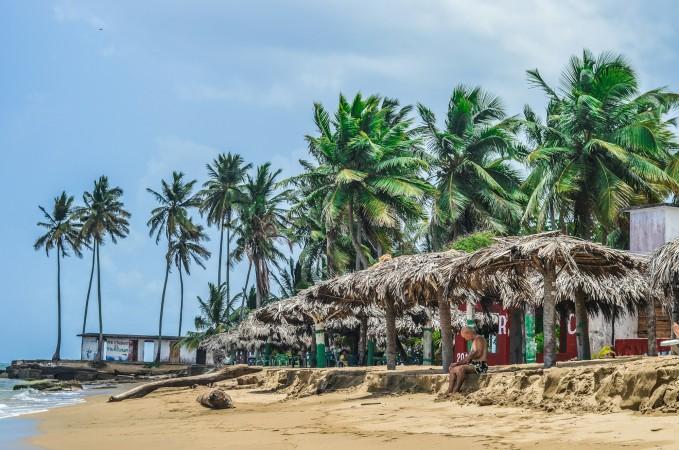
Sri Lanka's stunning beach - © Michael Mims
Best Place to See Stilt Fishing in Sri Lanka
The best places to see stilt fishermen are along the southern coast of Sri Lanka. These locations are not only ideal for seeing stilt fishing but also offer stunning views of Sri Lanka's southern coastline.
- Koggala: Koggala is perhaps the most famous spot for stilt fishing in Sri Lanka. Situated near Galle, it is a prime location where you can see fishermen perched on stilts in the shallow waters of the Indian Ocean. The beaches here offer an iconic view of this age-old practice, especially during early mornings and late afternoons when the fishermen are most active.
- Weligama: Located a bit farther from Koggala, stilt fishing in Weligama is another spot worth visiting. The picturesque beach and the tranquil waters provide a perfect backdrop for watching the fishermen go about their work. The town itself is a hub for surf enthusiasts, making it a great place for a blend of cultural and leisure activities.
- Kataluwa: Close to Koggala, Kataluwa is another beach where you can spot stilt fishermen. This area is less crowded than Koggala, offering a more peaceful experience while still capturing the essence of this traditional practice.
- Ahangama: Stilt fishing in Ahangama is another great location where this traditional practice can be observed. It is an off-the-beaten-path destination, providing a quieter and more authentic feel for those looking to avoid more tourist-heavy spots.
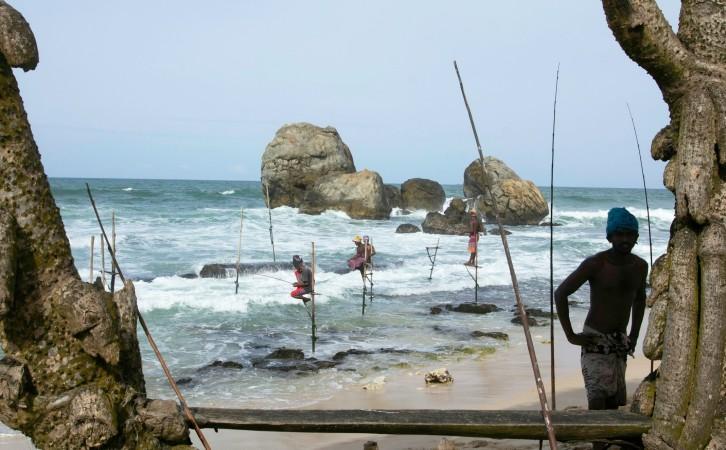
Stilt fishing in Koggala - © Geoff Brooks
Best Time to See Stilt Fishing
The optimal times to witness stilt fishing along Sri Lanka's southern coast are at sunrise and dusk. Morning sessions typically conclude by 9 a.m., when fishermen sell their catch—often small fish like spotted herring and mackerel—to local buyers. In the evening, fishermen return to the stilts, where they pose for photographs and interact with tourists until sunset. Some adventurous visitors even try their hand at fishing from the stilts, offering tokens of appreciation like souvenirs or monetary support to the fishermen.
>>>Read more:
>>A Perfect Day in Galle Sri Lanka: Your Ultimate Travel Guide
Cultural Significance of Stilt Fishing
Cultural Symbol of Coastal Region
Stilt fishing in Sri Lanka transcends mere fishing; it is a profound cultural symbol deeply ingrained in tradition. The sight of fishermen perched gracefully on their stilts has become an iconic representation in local art and photography, symbolizing tranquility and unity with nature. This cultural significance extends deeply into the social fabric of coastal communities. Passed down through generations from father to son, stilt fishing fosters a sense of continuity and community identity.
Intersect with Modern Era
Stilt fishing aligns closely with the global themes of sustainability and environmental conservation. Its allure for tourists lies not only in its picturesque charm but also in its reflection of a lifestyle that values harmony with the environment over modern conveniences. With its minimal impact on the ecosystem, this ancient practice serves as a poignant reminder of Sri Lanka’s historical heritage and a model for future generations, promoting a sustainable relationship with nature.
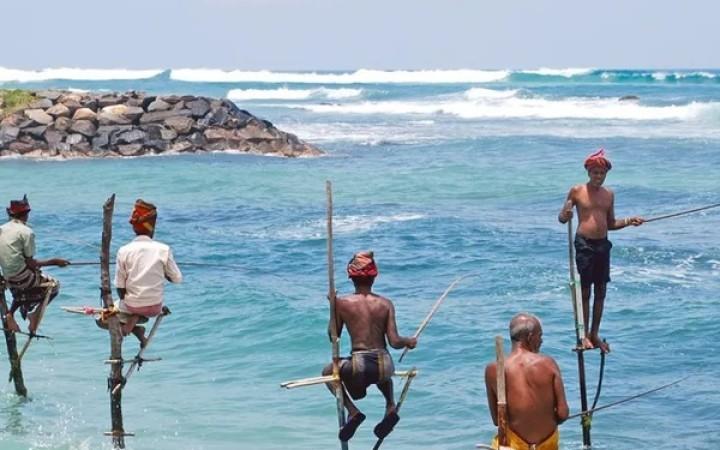
Stilt fishing in during sunrise - © CafeBiz
Impact of Stilt Fishing on Sri Lanka’s Economy and Environment
Impact on Economy
Stilt fishing in Sri Lanka influences both the economy and the environment in distinctive ways. Economically, it is critical to maintaining the livelihoods of local fishermen. These fishermen typically sell their daily catch directly to local markets or tourists, providing a sustainable income stream that doesn't rely on unsustainable fishing practices.
Impact on Environment
From an environmental perspective, stilt fishing stands out for its sustainability. Using minimal equipment and no bait, it minimizes disruption to marine habitats. The practice occurs predominantly on natural coral reefs, and its small-scale nature ensures minimal ecological impact. This approach exemplifies responsible resource utilization, aligning closely with global objectives for environmental conservation.
Therefore, stilt fishing not only fosters economic stability for coastal communities but also promotes environmental stewardship by prioritizing marine conservation. Its dual impact underscores its significance as a model for sustainable fishing practices worldwide, showcasing how livelihoods can thrive without compromising the health of our oceans.
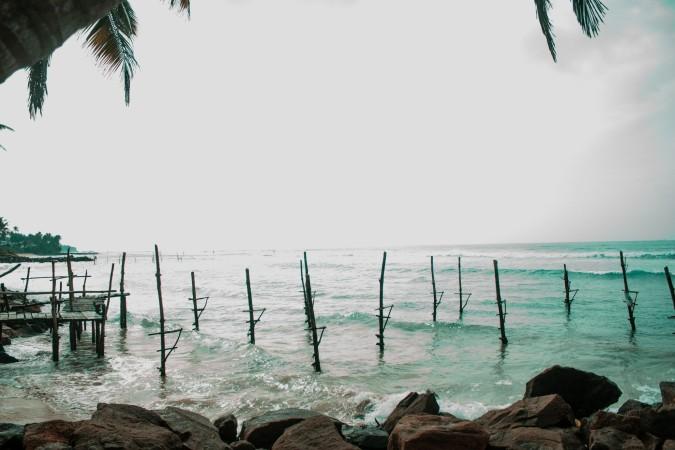
Stilt fishing helps protecting marine life along Sri Lanka's coast - © Tiago Rosado
Stilt Fishing Preservation Efforts in Sri Lanka
Reality of Stilt Fishing in Sri Lanka
The practice of traditional stilt fishing in Sri Lanka faces contemporary challenges alongside dedicated preservation efforts. Despite a decline in the number of stilt fishermen, influenced by lucrative job opportunities and the impact of growing tourism, efforts persist to safeguard this cultural heritage.
Historically revered locations such as Mirissa, Koggala, and Galle, once bustling with traditional stilt fishing activities, now witness a shift towards performances tailored for tourist photo opportunities rather than genuine fishing pursuits.
Preservation Efforts
In response to these changes, proactive preservation initiatives are underway to uphold stilt fishing as not just a relic of the past but a living tradition. Highlighted in a recent article by The Morning News of Sri Lanka–”Stilt fishing in Koggala”, these efforts include educational programs designed to educate younger generations about the skills and cultural significance associated with stilt fishing. The aim is to foster a sense of pride and commitment to its continuation among future custodians of this heritage.
Moreover, local organizations are striving to strike a balance between tourism and tradition. Their focus is on ensuring that stilt fishing retains its economic viability while preserving its authenticity and environmental sustainability.
These concerted efforts are pivotal in safeguarding the survival of stilt fishing amidst contemporary challenges. By addressing these modern-day pressures while emphasizing its role as a sustainable fishing method and a cornerstone of Sri Lanka's cultural fabric, these initiatives reinforce its enduring significance and relevance in today's world.
>>>Read more:
>>Journey to The Marvelous Sigiriya Rock Fortress in Sri Lanka
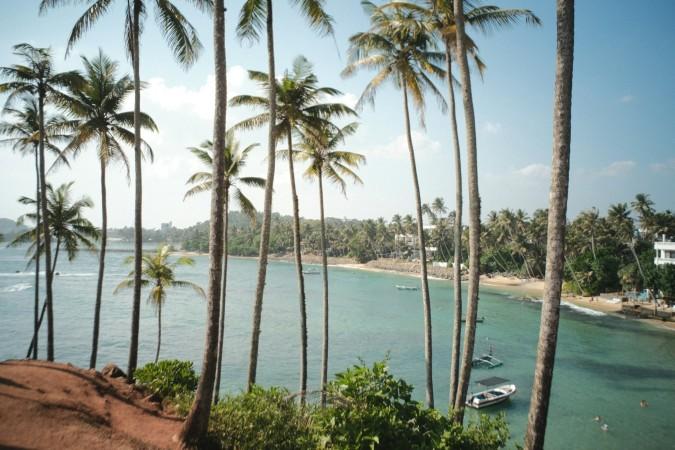
Preserving stilt fishing is preserving Sri Lanka's cultural heritage - © Austin Curtis
Joining the Preservation Effort & Eco-Tourism with Tweet Tours
Tweet Tours invites travelers to embark on an immersive journey into the traditional art of stilt fishing in Sri Lanka. Our tours not only allow you to witness this unique fishing technique but also provide an opportunity to actively participate. Guests can learn firsthand from local fishermen, gaining insights into a practice that has been cherished along the southern coast for generations.
Our Sri Lanka tours are designed to offer an authentic cultural experience, where tourists engage directly with the local community to understand the profound significance of stilt fishing. Beyond learning the skills of fishing while perched on stilts, participants gain an appreciation for the sustainable practices and deep-rooted heritage embedded in this traditional form of fishing.
Stilt fishing tours are part of a comprehensive package that showcases the allure of Sri Lanka, combining cultural heritage with breathtaking natural landscapes. Guests can expect to capture stunning images of fishermen silhouetted against the backdrop of Sri Lanka’s scenic beauty, particularly during the magical moments of sunrise and sunset.
For more details on our Sri Lanka exploration tours and to explore all the enriching experiences we offer, especially if you’re planning for luxury honeymoons in Sri Lanka, visit our website or contact our Call Center for information on special offers and personalized travel arrangements.
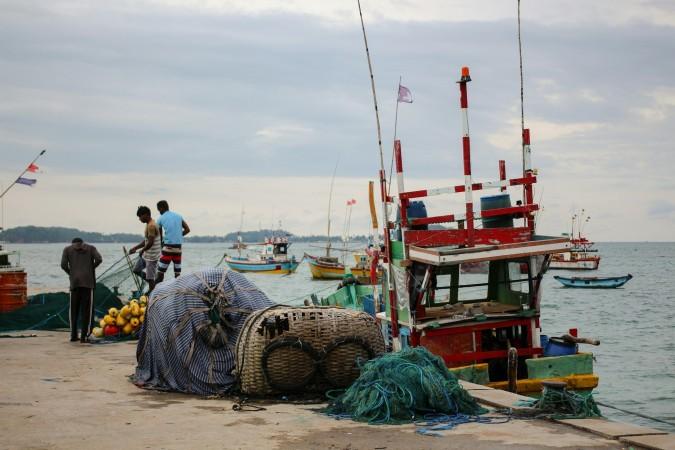
Experience eco-tourism with Tweet Tours - © Ekaterina Boltaga
Conclusion
Stilt fishing in Sri Lanka transcends mere technique; it embodies a profound connection between tradition, environment, and community. As travelers embark on journeys to explore this enchanting practice, they not only witness a centuries-old tradition in action but also contribute to its preservation through responsible tourism practices. By engaging with local fishermen, capturing memorable photographs, and sharing their experiences with others, travelers play a vital role in safeguarding Sri Lanka's cultural heritage for future generations.
In conclusion, stilt fishing stands as a testament to the resilience and ingenuity of Sri Lanka's coastal communities, offering a glimpse into a way of life shaped by the rhythms of the sea. Whether observed from afar or experienced up close, stilt fishing invites travelers to discover the beauty of tradition and the allure of cultural exchange in one of Asia's most captivating destinations.
Articles for you

Experience Aboard The RV Indochine II - A Mekong Cruise With Tweet World Travel
The RV Indochine II is a luxury river cruise ship, offering an unforgettable journey through many attractions along the Mekong River. Built in 2017, this upscale vessel combines colonial elegance with modern conveniences to create a comfortable yet stylish environment for its crew and passengers. The ship’s intimate size makes it ideal for those seeking a more personal cruising experience while exploring Vietnam and Cambodia rich culture, scenery, and heritage. Whether you're gazing at the landscape from your private balcony or enjoying authentic local cuisine, RV Indochine II promises an exotic adventure like no other.

Witness Stilt Fishing In Sri Lanka: An Eco-Tourism Experience
Sri Lanka, renowned for its stunning beaches and rich cultural heritage, harbors a unique tradition that has captivated travelers for centuries: stilt fishing. This ancient practice, passed down through generations of coastal communities, blends artistry with necessity, offering a glimpse into a way of life intimately connected to the island's coastal rhythms. Stilt fishing in Sri Lanka isn't merely a means to catch fish; it's a cultural emblem, embodying the resilience and ingenuity of Sri Lanka's fishing communities.

Make Your Trip Stress-Free With The Tweet Trip App
Embark on your next adventure with confidence by downloading the Tweet Trip App, available for both iOS and Android. This essential travel companion allows you to view your detailed itinerary, stay connected with your tour guide and fellow travelers, receive real-time updates, and provide feedback effortlessly. With features like in-app messaging, emergency assistance, and location sharing, the Tweet Trip App ensures you travel smarter, stay connected, and enjoy a seamless, worry-free journey. Get started today and make the most of your travel experience with Tweet World Travel.

Pedal Through Paradise: Unveiling Cambodia's Hidden Gems on Two Wheels
The gentle whir of bicycle wheels mingles with the distant chants of monks as you glide past emerald rice paddies stretching to the horizon. This is Cambodia - a sensory explosion waiting to be experienced on two wheels. At Tweet Tours, we believe there's no better way to immerse yourself in the Kingdom of Wonder than by bicycle.
Cambodia isn't just a destination; it's a living, breathing tapestry of ancient wonders, natural beauty, and vibrant culture. Our carefully crafted cycling tours take you beyond the typical tourist haunts, offering a unique perspective on this captivating country. Ready to clip in and discover the magic of Cambodia? Let's ride!

Trekking in the Himalayas: A Journey Through Nepal's Majestic Peaks
The Himalayas rise from the earth like colossal guardians, their snow-capped peaks piercing the sky in a display of nature's raw power and beauty. Nepal, nestled at the heart of this mountain range, serves as the gateway to some of the most breathtaking trekking experiences on the planet. Here, the air is crisp and thin, filled with the promise of adventure and the whispers of ancient tales.
With Tweet Tours, as you set foot on these hallowed trails, you're not just a traveler - you're a modern-day explorer, following in the footsteps of legendary mountaineers and age-old traders. Each step takes you further into a world where nature reigns supreme and human resilience is tested against the backdrop of some of the world's highest peaks.
From the moment your boots touch the ground in Kathmandu, you'll feel the pull of the mountains. The bustling streets of the capital, with their sensory overload of sights, sounds, and smells, soon give way to serene mountain paths where the only soundtrack is the crunch of gravel underfoot and the distant tinkling of yak bells.

Exploring Mui Ne's Wonders: Unique Attractions & Local Dishes
Nestled along the southeastern coast of Vietnam, Mui Ne emerges as a captivating gem, blending natural wonders with cultural richness. Renowned for its stunning landscapes and unique attractions, Mui Ne beckons travelers seeking both relaxation and adventure in equal measure. Mui Ne's renowned beach dunes, bustling fishing towns, and excellent local food await exploration at every turn.
The allure of Mui Ne lies not only in its pristine beaches and crystal-clear waters but also in its diverse range of activities catering to every traveler's whims. Whether you're drawn to thrilling water sports like kitesurfing and windsurfing on its dynamic shores or seeking tranquility amidst the picturesque Fairy Stream, Mui Ne promises an unforgettable journey filled with discovery.
